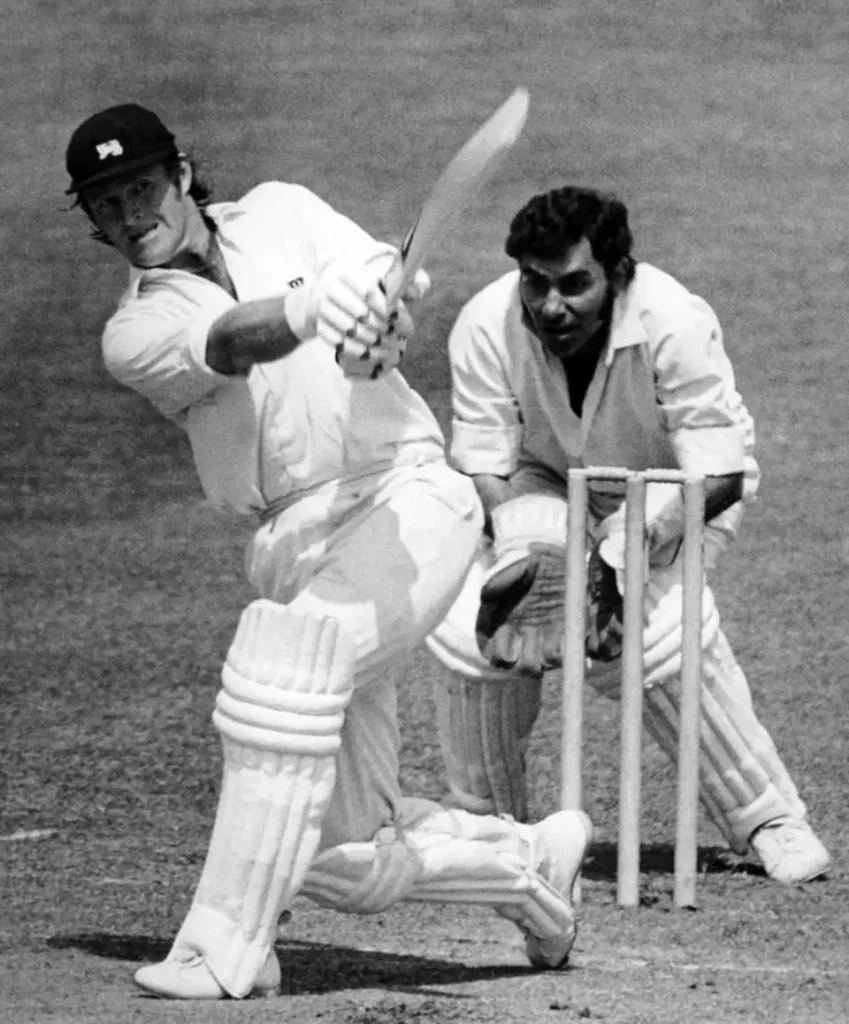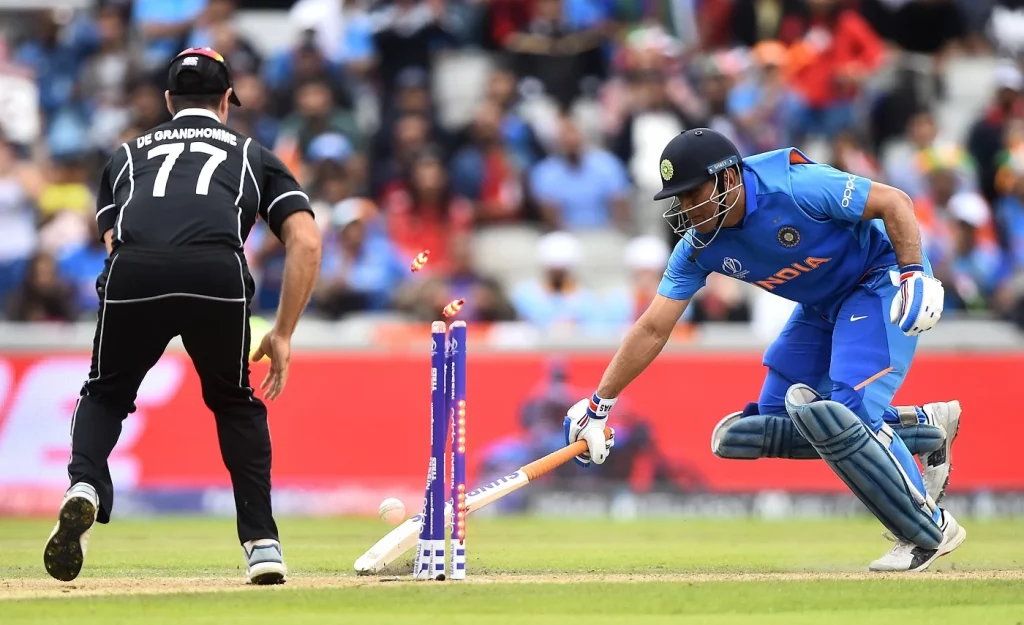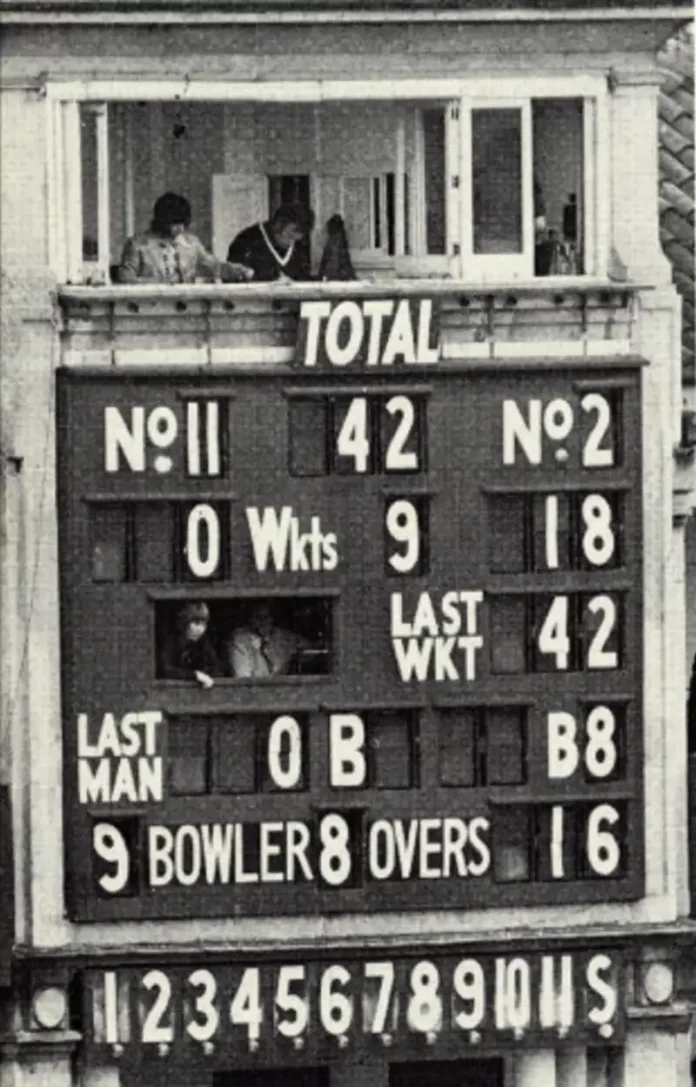After creating history in 1971 by winning a series in England for the first time, India went on the 1974 tour holding out the rich promise of an encore. Ajit Wadekar was still captain and most members of the 1971 winning team were in the squad. But the results were disastrous.
India were whitewashed 0-3, the worst performance coming at Lord’s where the team was shockingly bowled out for 42 in the second innings. The highest run scorer was Eknath Solka with an undefeated 18, the other 10 batsmen mustering a mere 24 runs between them
In the aftermath of the humiliating defeat, Wadekar not only quit the captaincy but retired from the game Indian cricket was at the crossroads. Mansur Ali Khan Pataudi, who had been displaced from the job in 1971 by chief selector Vijay Merchant’s casting vote, was recalled to lead the team against West Indies that winter at home.

v England, Lord’s, 1975 World Cup 334-4, India 132-3, Eng won by 202 runs
India’s first match in the inaugural World Cup turned out to be a colossal flop show. Batting first, the home team hammered 334-4. Even on a batting friendly pitch, this was a huge score to surmount, but nobody expected India’s response to be so pusillanimous. In 60 overs, India managed to score only 132 in a run crawl that defied the fundamental idea of playing limited overs cricket. Ironically, the main culprit was batting mainstay Sunil Gavaskar, who remained not out on 36 batting through the entire 60 overs!
Subsequently, Gavaskar was to say that it was one of those days where he tried his best, but just couldn’t get the scoreboard moving. His acute passivity earned India the tag of `Dull Dogs Of Cricket’. This perception was to be corrected only eight years later when India won the World Cup in 1983 under Kapil Dev.

Before the 1983 redemption song, India suffered another humiliating setback in World Cup tournaments when they lost to Sri Lanka in 1979. The Lankans then were still not full members of the ICC and considered a minnow side. But in this match, they were an inspired lot, getting the better of their more illustrious opponents by 47 runs.

Hosts India and Pakistan were tipped to meet in the final of this World Cup. Both, however, tripped in their respective semi-finals. Pakistan lost to a young Australian team at the Gaddafi Stadium in Lahore and the following day India were humbled by England at Mumbai’s Wankhede stadium. The defeat was inflicted not so much by English talent, but superior tactics. Knowing India’s bowling strength lay in spin, England captain Graham Gooch reworked preparations for the match by inviting local spinners to bowl at his batsmen in the nets. The batsmen were also encouraged to counter turn with the sweep: a somewhat risky stroke but which could throw the bowlers off their rhythm
In the match, Gooch led from the front making a marvellous century, countering the threat of Maninder Singh and Ravi Shastri with his sweep strokes. India failed to find a response to the tactic in time, didn’t change line or length and England ended up making 254 for 6. When India batted, England’s spinners John Emburey and Eddie Hemmings gave an object lesson on how to bowl on such a pitch. India were bundled out for 219. This was the last international match played by Suni Gavaskar and the last time Kapil Dev captained the country.

After beating Pakistan in style in an emotion-charged quarter-final, India looked invincible entering the semi-final against Sri Lanka. The Lankans were an exciting young side, but surely India, playing at home, would be just too strong.
When Javagal Srinath dismissed dangerous openers Jayasuria and Kaluwitharana in the first over, India had taken a stranglehold immediately. A blazing half century by Aravinda de Silva pulled his team out of a crisis. Sri Lanka finally reached 251-8, a respectable score, but hardly good enough to stymie the strong Indian batting.
With Sachin Tendulkar showing immaculate touch, India looked to be coasting to an easy win. Then, suddenly, things started going haywire.
Tendulkar was dismissed for 65 at 98. Incredibly, a further 6 wickets fell for just 22 runs! The Sri Lanka spinners exploited the wearing pitch skillfully, aided and abetted by timid, pusillanimous batting.
Seeing the abject capitulation, irate spectators at the Eden Garden erupted, throwing debris on to the ground. Play was stopped, frantic attempts were made to restart the match, but the hostile crowds were unrelenting. Vinod Kambli, walking off the field in tears became symptomatic of India’s shocking surrender. Sri Lanka went on to win the title beating Australia in the final.

In the 2007 World cup, India were joint favourites along with Australia. But their campaign did not last beyond the first round. The fell blow came against low-ranked Bangladesh who everyone thought would be beaten without ado by a strong Indian team that boasted players of the caliber of Ganguly, Sehwag, Tendulkar, Dravid, Yuvraj, Dhoni, Kumble and Zaheer Khan.
At this point in time, the Indian team was in the throes of a crisis with chief coach Greg Chappell at loggerheads with several in the side. The players were divided down the middle, and the tension of the dressing room spilled onto the field of play, most starkly in the match against Bangladesh.
The heavy-duty top order tumbled against the Bangladesh bowlers and India managed only a modest 191. This was too small a total to defend on a true pitch against inspired batting by Bangladesh who reached the target easily, with 5 wickets to spare.
India had failed to reach the knock-out and had to return from the West Indies in sullen silence. This was to be Greg Chappell’s last assignment as coach. He resigned after the defeat, ending one of the most controversial chapters in Indian cricket. Within a few weeks, after the tour to England which followed, skipper Rahul Dravid too resigned as captain.
After much dithering and debate, the captaincy was divided between Anil Kumble (Tests) and young Mahendra Singh Dhoni for white ball cricket. Later that year, Dhoni led India to a sensational win in the inaugural T20 World Cup. Four years later, he was captain when India won the ODI World Cup too. In 2013 he led his team to victory in the Champions Trophy to complete a hat-trick of wins in multi-nation ICC tournaments. Since then, India has been starved of a win in such tournaments.

Having thumped Pakistan by 124 runs in the league stage, India were odds-on favourites to win the final. But the script played out differently when the two teams met again.
Pakistan, batting first, took the attack to the Indian bowlers, hammering 338-4. While conditions were tailor-made for batting, chasing 300-plus is always daunting. India needed a good start to put pressure on the Pakistan bowlers. Instead, the top order was demolished by Mohamed Aamir in a splendid exhibition of swing bowling.
Aamir, who had returned to international cricket after serving out a long ban for spot-fixing, picked up the wickets of Rohit Sharma, Virat Kohli and Shikhar Dhawan in his opening spell, which more or less sealed the fate of the match. India were bowled out for 158 in just 30.2 overs, leaving Pakistan winners by a whopping 180 runs.
Playing out in the background of this debacle was the conflict between Captain Virat Kohli and chief coach Anil Kumble. What had seemed a marriage made in heaven crumbled very soon with Kohli making known that it was either or between him and Kumble. The BCCI went with the captain. The Champions Trophy was Kumble’s last assignment as coach. He was replaced by Ravi Shastri, brought back after a year in the wilderness. The Shastri-Kohli partnership continued for 6 years creating a magnificent legacy in all formats, but failing to win any ICC tournament.

Courtesy: ESPNcricinfo
India’s progress in this World cup had been according to expectations till the semi-final. Impressive victories over South Africa, Australia and Pakistan had marked Virat Kohli’s team as favourites for the title. New Zealand were a hardy, consistent team, but they were perennial also-rans, regularly making it to the semi-finals, never beyond. Why would it be different this time?
But it was. Batting first, New Zealand made 239-8 in bowler-friendly conditions. The innings was spread over 2 days because of rain. But when play resumed on the second day and with a target of 240 to chase, the match looked tilted in India’s favour.
The optimism was to be snuffed out within a few overs after the Indian innings began.
In conditions favouring swing and seam bowling, Matt Henry and Trent Boult prised out the Indian top order in double quick time. Rohit Sharma fell in the second over of the innings, Virat Kohli the third, K L Rahul the fourth which more or less settled the issue in New Zealand’s favour.
M S Dhoni and Ravindra Jadeja put up a brave rearguard fightback, but too much had been lost earlier for the outcome to be any different than a resounding defeat for India.

Courtesy ; Sky Sports
In 2018, India had created history,winning a first-ever Test series in Australia. Two years later, in the backdrop of the Covid pandemic, the Indian team was once again Down Under. What would be the result this time?
With Steve Smith and David Warner back after their one-year ban for ball tampering, Australia were at full strength. When the two teams took the field at Adelaide for the first Test, most critics reckoned this was going to be one heck of a tough series. Nobody knew how melodramatic it would turn out to be though!
The first Test at Adelaide was a match of massive swings. After taking a first innings lead of 51, India looked to be in control of the match. In the second innings, however, India crashed extraordinarily for 36, the fifth lowest score in Test history, and 6 runs fewer than 42 at Lord’s almost half a century earlier. Australia won the match easily by 8 wickets.
This story had a happy ending, however. Shrugging off the ignominy of being bowled out for 36, and in spite of several key players missing, the Indian team recovered to win the next Test, and then clinched the series in a tantalizing final match at Brisbane!

Courtesy : ICC cricket
A mouth- watering contest that went sour for the Indian team and its millions of supporters.
Going into the tournament, England looked the best side, but heading into the semi-final, India looked like peaking in time. High quality players on both teams promised a star-studded humdinger. Disappointingly, India was as effervescent as flat soda, and got a royal hammering from the English. Apart from Kohli and Hardik Pandya the batting was tepid, and when India took the field to defend 168, the bowling was toothless. Victory and defeat is part of sport, but a 10-wicket drubbing was least expected from a team that had prepared for a year, with new captain (Rohit Sharma) and coach (Rahul Dravid) to win the title But as had been the case in several tournaments in the last decade, India suffered from stage fright and choked on the big occasion.



